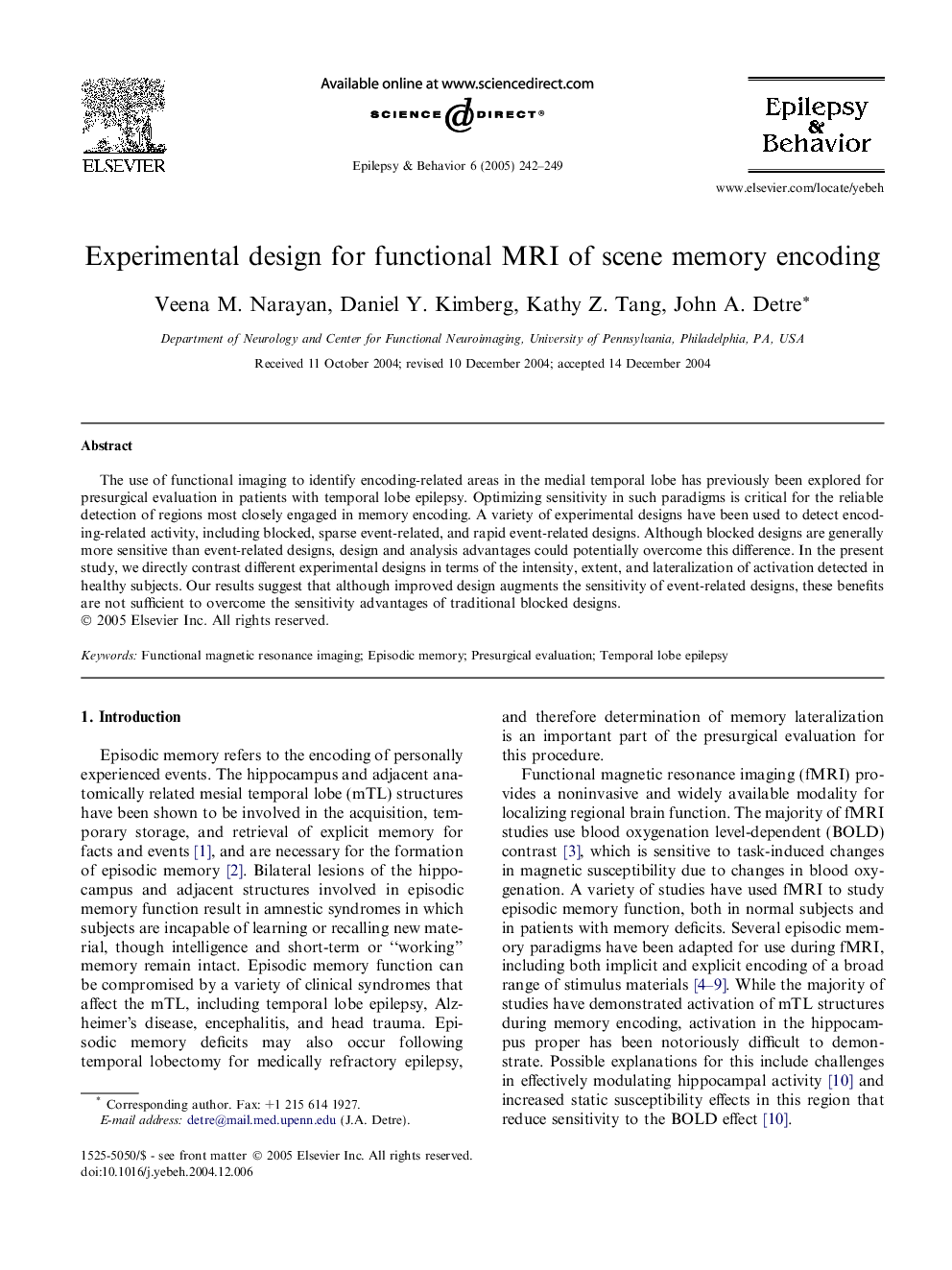| Article ID | Journal | Published Year | Pages | File Type |
|---|---|---|---|---|
| 9190392 | Epilepsy & Behavior | 2005 | 8 Pages |
Abstract
The use of functional imaging to identify encoding-related areas in the medial temporal lobe has previously been explored for presurgical evaluation in patients with temporal lobe epilepsy. Optimizing sensitivity in such paradigms is critical for the reliable detection of regions most closely engaged in memory encoding. A variety of experimental designs have been used to detect encoding-related activity, including blocked, sparse event-related, and rapid event-related designs. Although blocked designs are generally more sensitive than event-related designs, design and analysis advantages could potentially overcome this difference. In the present study, we directly contrast different experimental designs in terms of the intensity, extent, and lateralization of activation detected in healthy subjects. Our results suggest that although improved design augments the sensitivity of event-related designs, these benefits are not sufficient to overcome the sensitivity advantages of traditional blocked designs.
Keywords
Related Topics
Life Sciences
Neuroscience
Behavioral Neuroscience
Authors
Veena M. Narayan, Daniel Y. Kimberg, Kathy Z. Tang, John A. Detre,
